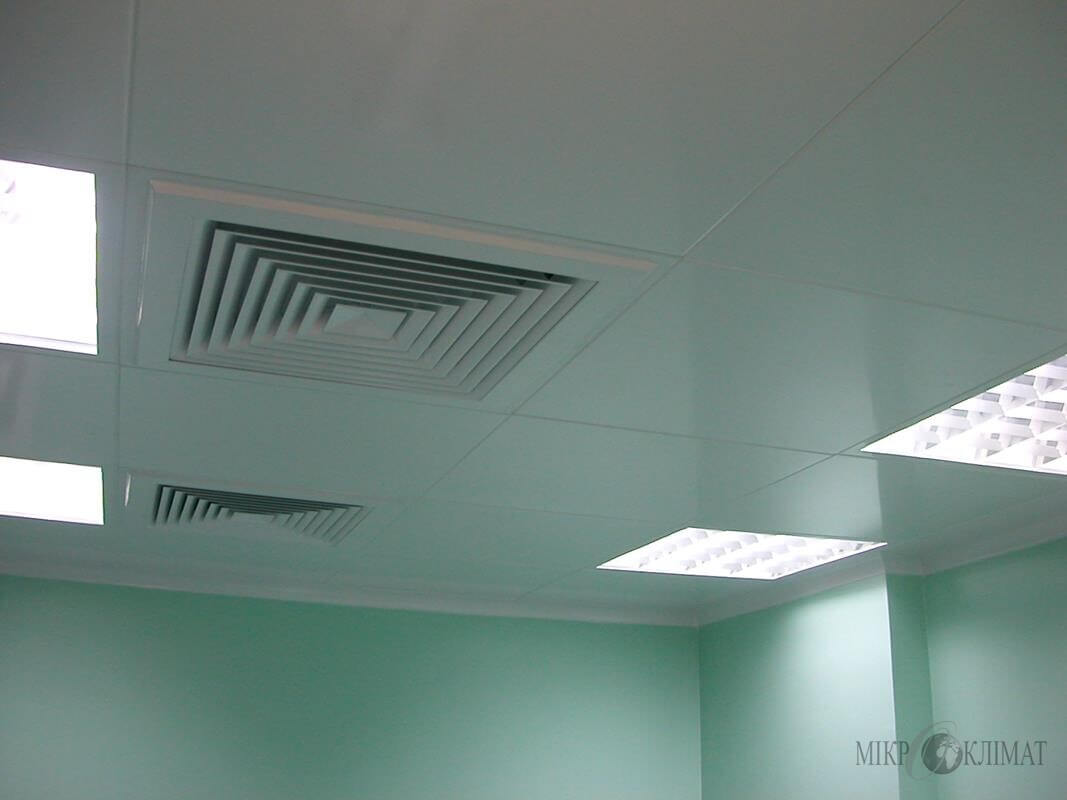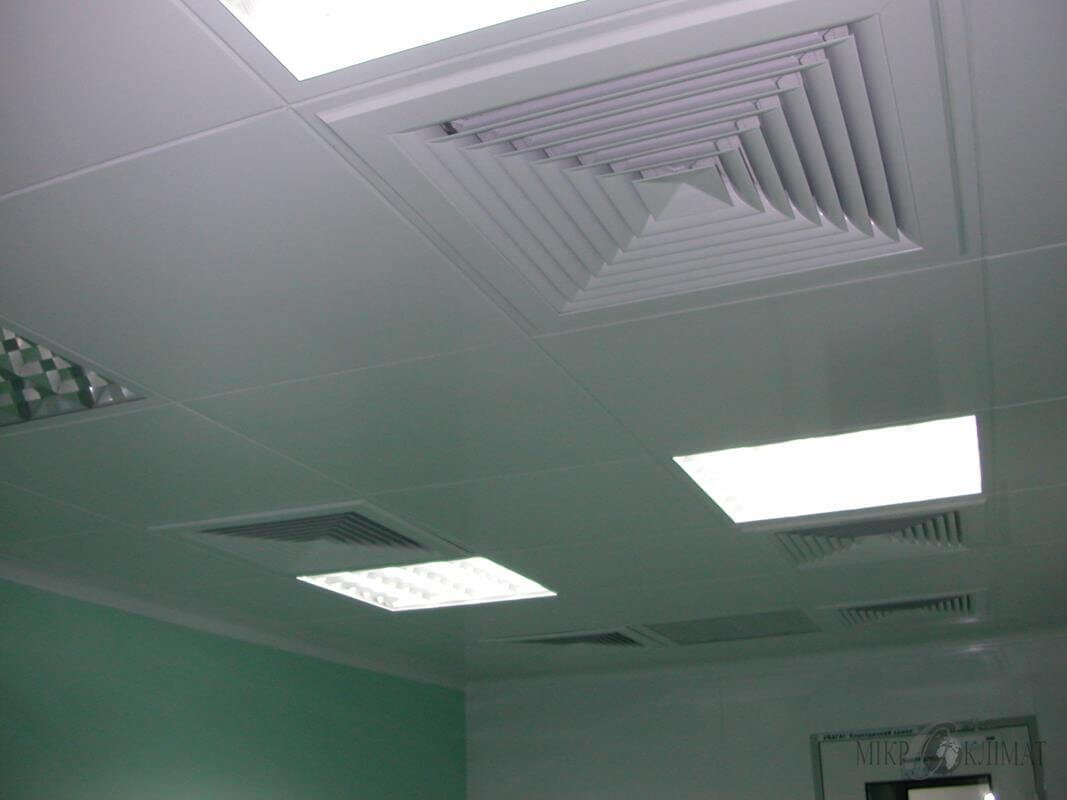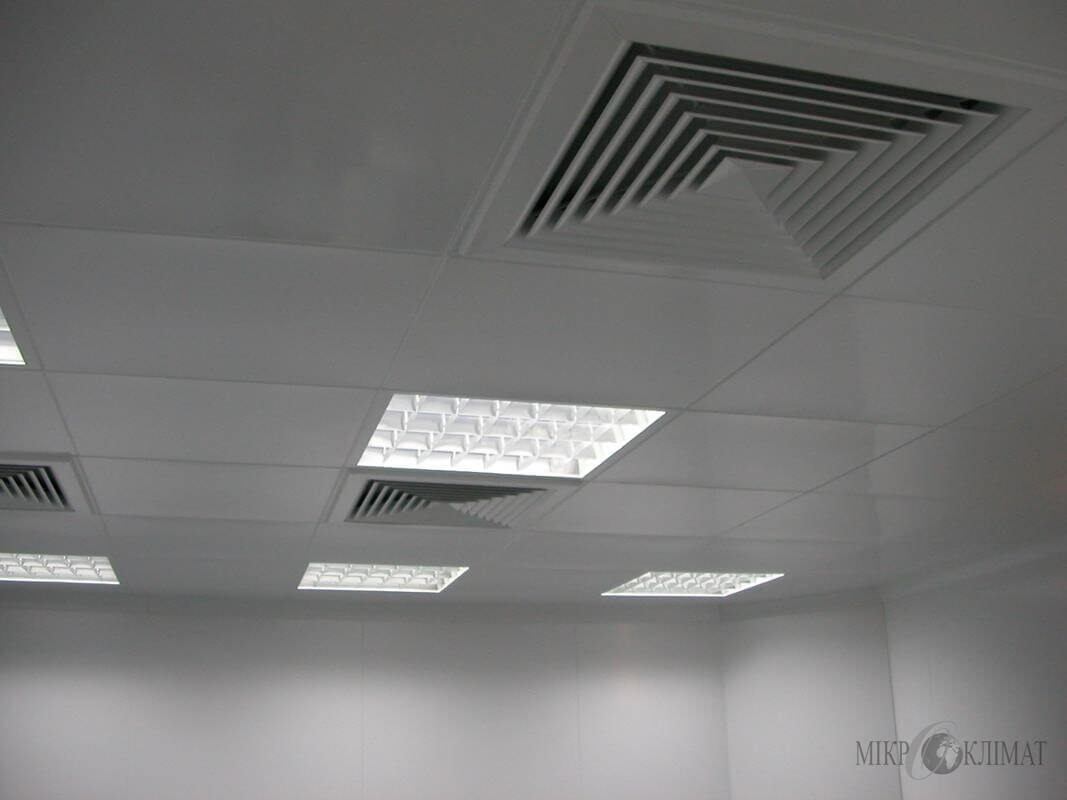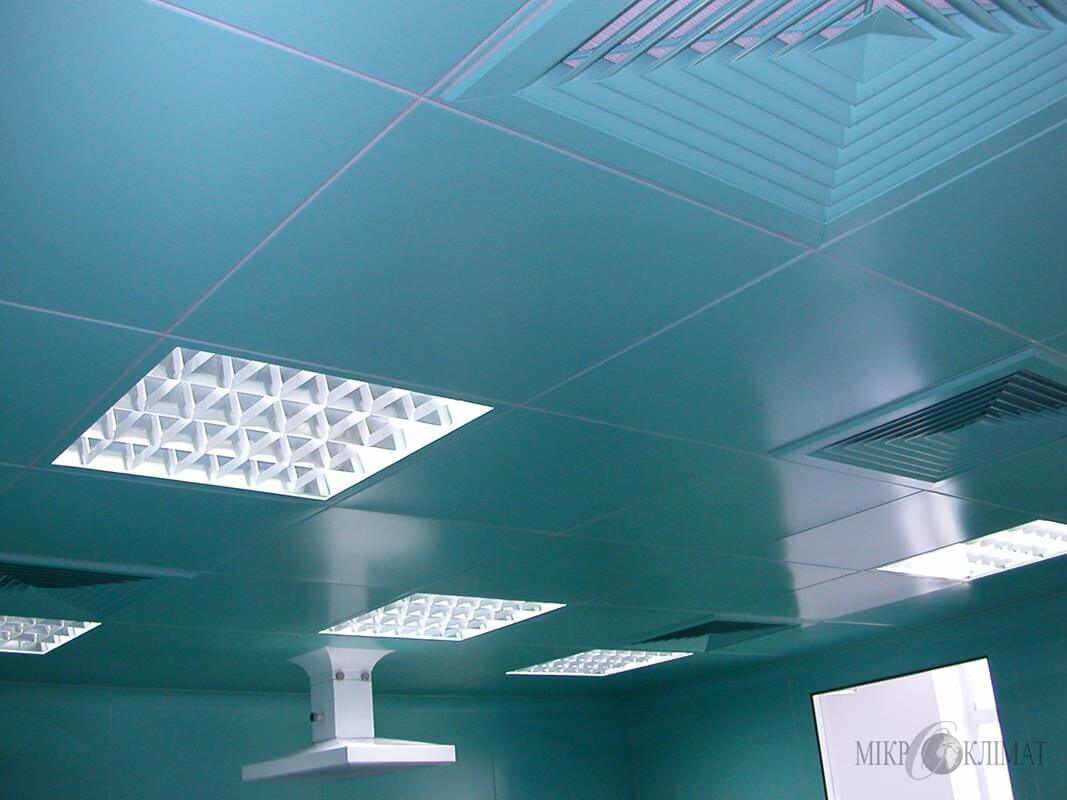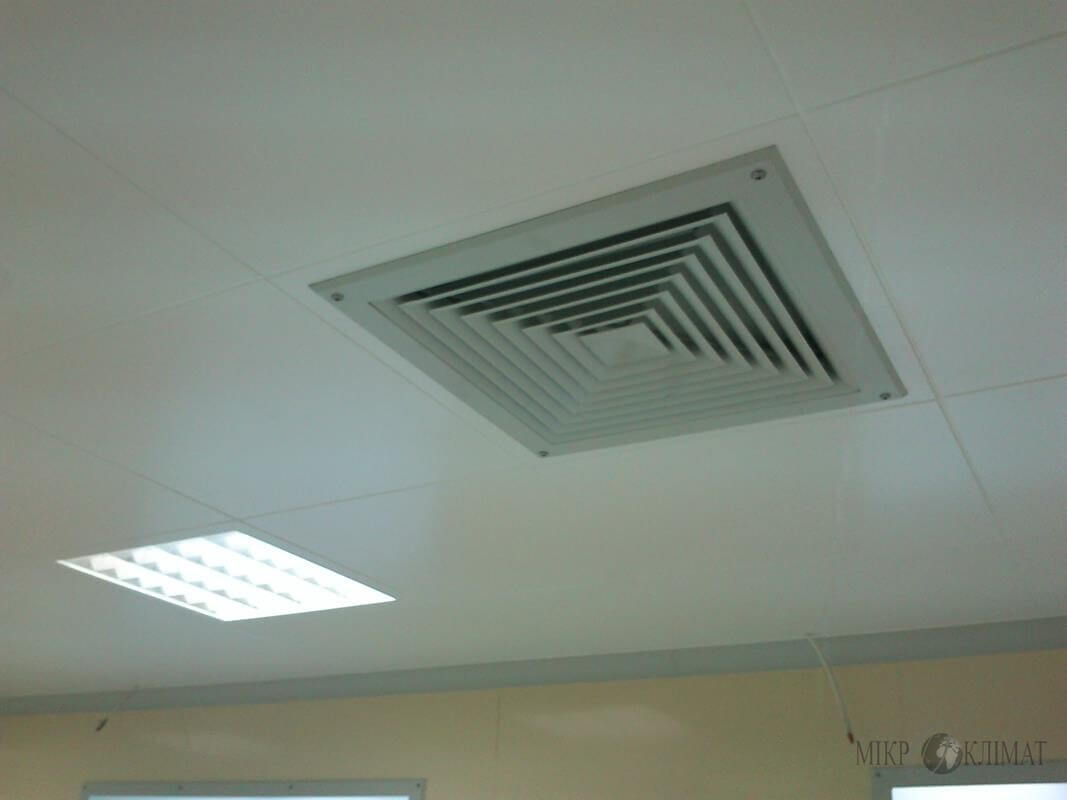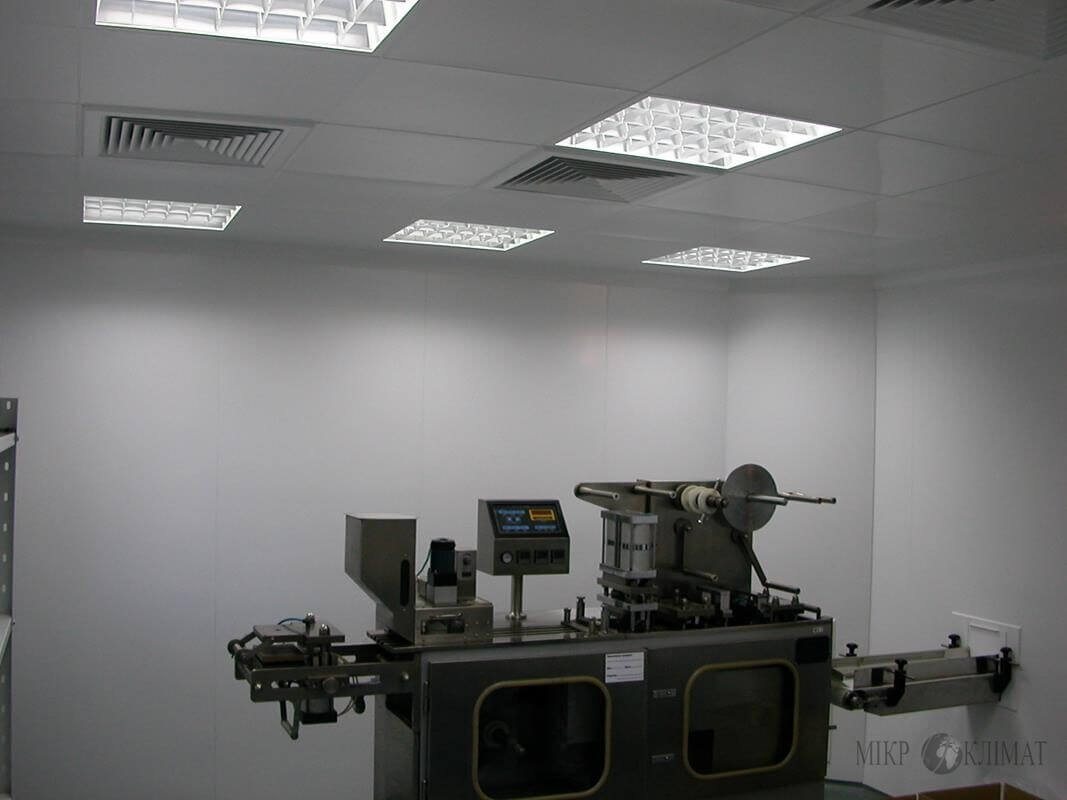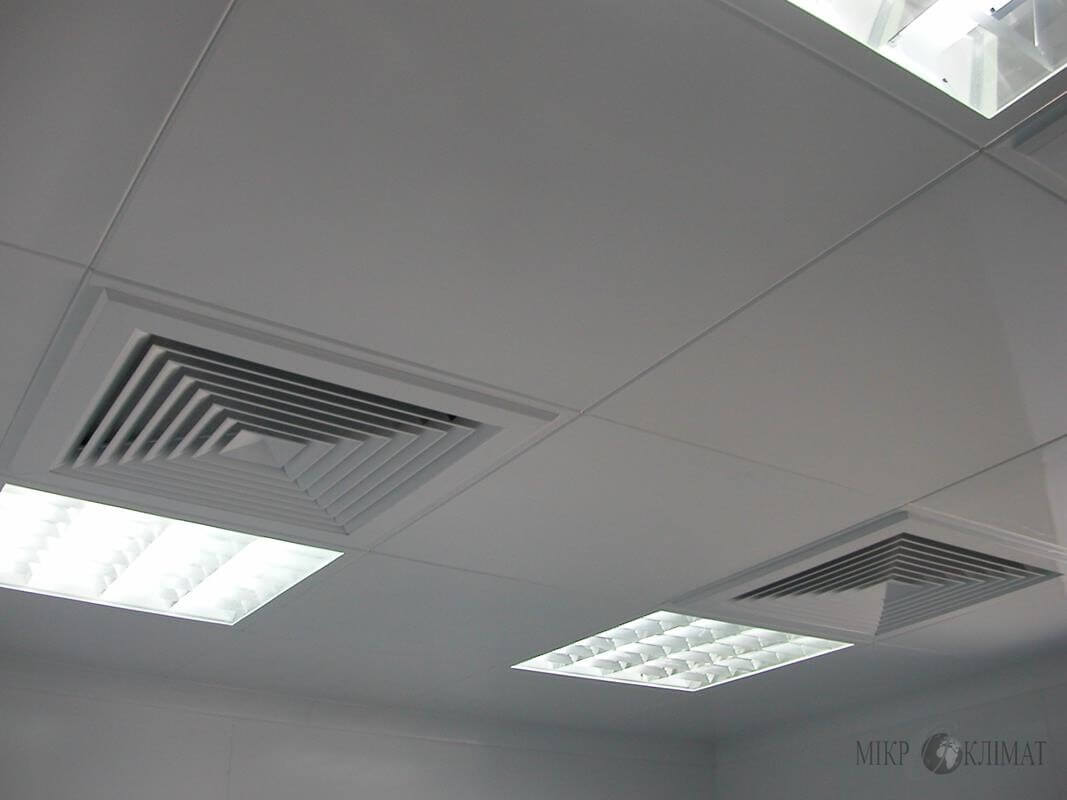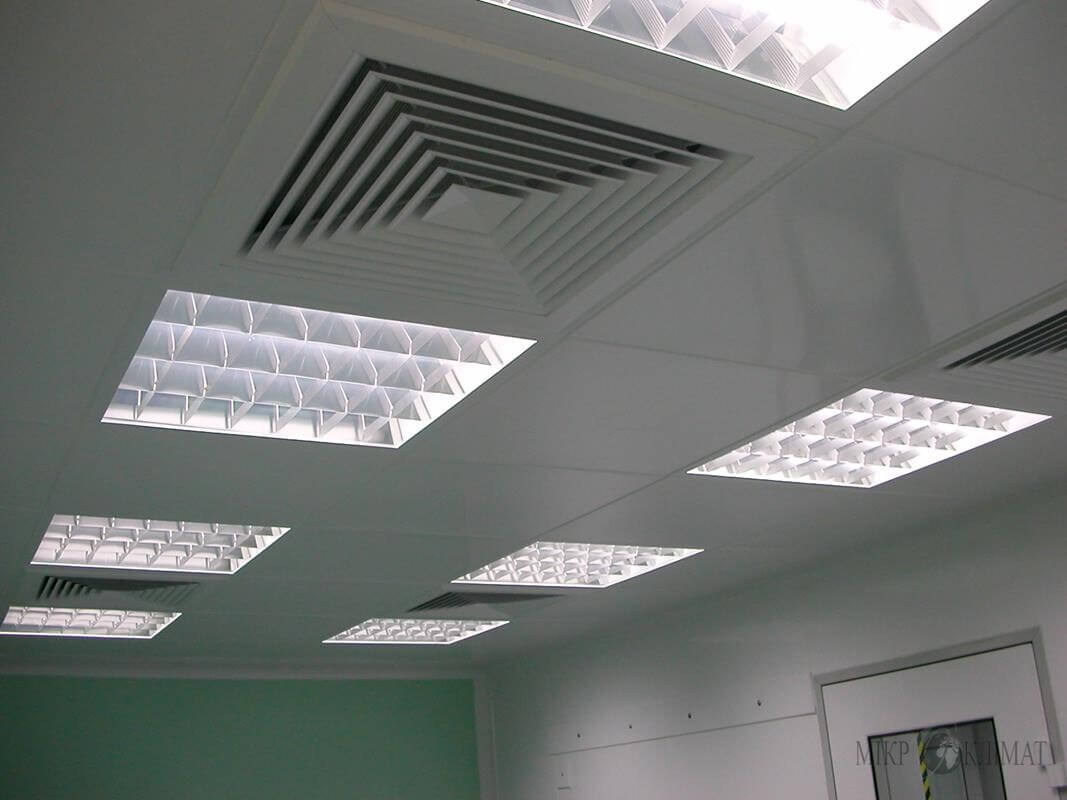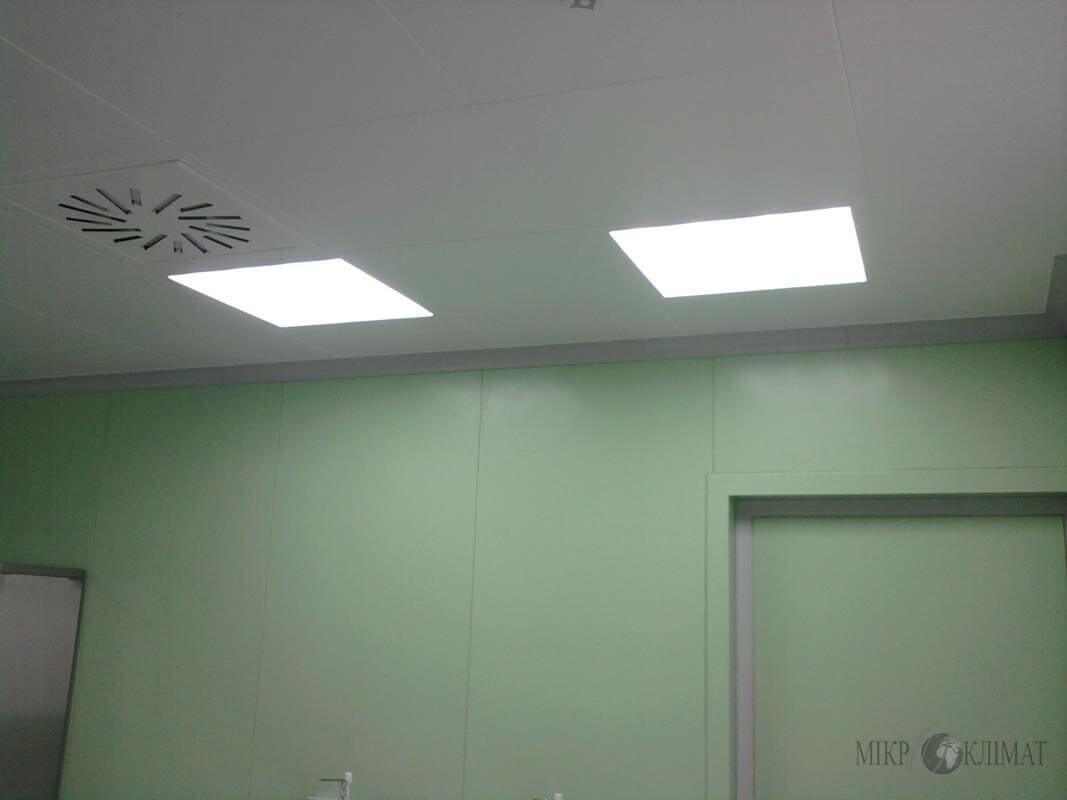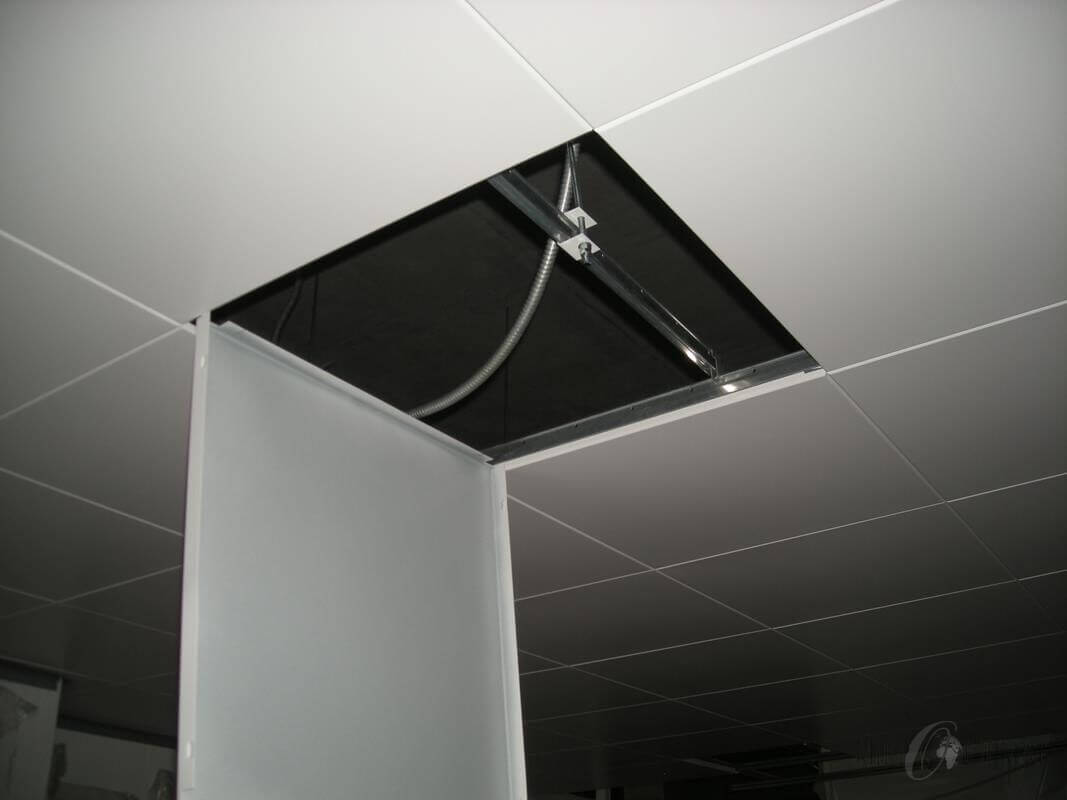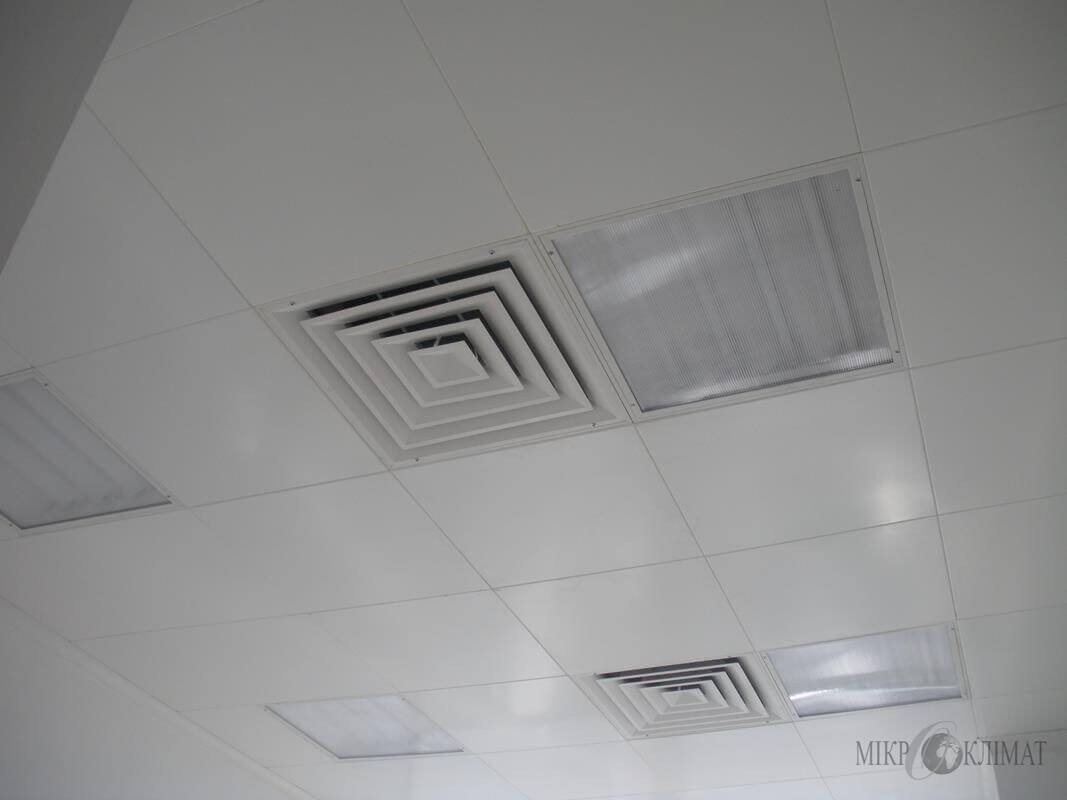Ceiling panels, "cassette" type
Ceiling panels, “cassette” type, are used for clean rooms as a suspended ceiling. Panels (cassettes) are made in standard sizes: 600x600mm, 625x625mm and 650x650mm. Panels of this type provide in the design of installation of additional heat-insulating or sound-insulating materials. The panels are assembled into a closed, airtight structure with the help of hidden fasteners. Structural units are designed in a hygienic design, do not have sharp corners, grooves, recesses, i.e. do not contribute to the accumulation of dust, harmful particles and bacteria. They are used for the needs of different types of industrial enterprises, different types of laboratories and various health care facilities.
This type of ceiling allows access to the ceiling communications, almost the entire area, due to the easy and quick removal of almost any cassette.
Ceiling panels are mounted using the hidden power elements behind and scurrying designs of the case and wall designs of a clean room.
The design of ceiling panels provides for a tight integration of lighting and ventilation components.
The joints between the panels are additionally sealed with a silicone-based sealant with guaranteed quality.
Materials used for the production of panels are environmentally friendly.
The main technical characteristics of ceiling panels, “cassette” type
Thickness of panels (cassettes) | 28mm |
Panel size (cassettes) | 600x600mm, 625x625mm, 650x650mm |
Materials of panels | Galvanized metal, 0,8mm thick |
Galvanized metal with antibacterial PVC coating, 0,8mm thick | |
Stainless metal, 0,8mm thick | |
Filling of the panels | Mineral wool with a density of 50kg/m3 |
Noise isolation (optional) | |
Covering the surface of the panels | Polyester powder paint |
Polyester powder paint with antibacterial properties | |
PVC with antibacterial properties |
The elements are covered with powder paints, sintering method. The coating is characterized by surface hardness, resistance to treatment with disinfectant solutions, does not contribute to the formation of microcracks and the generation of microparticles from the working surface of the panel. The color of the coating can be selected according to the RAL colors for powder paint.


